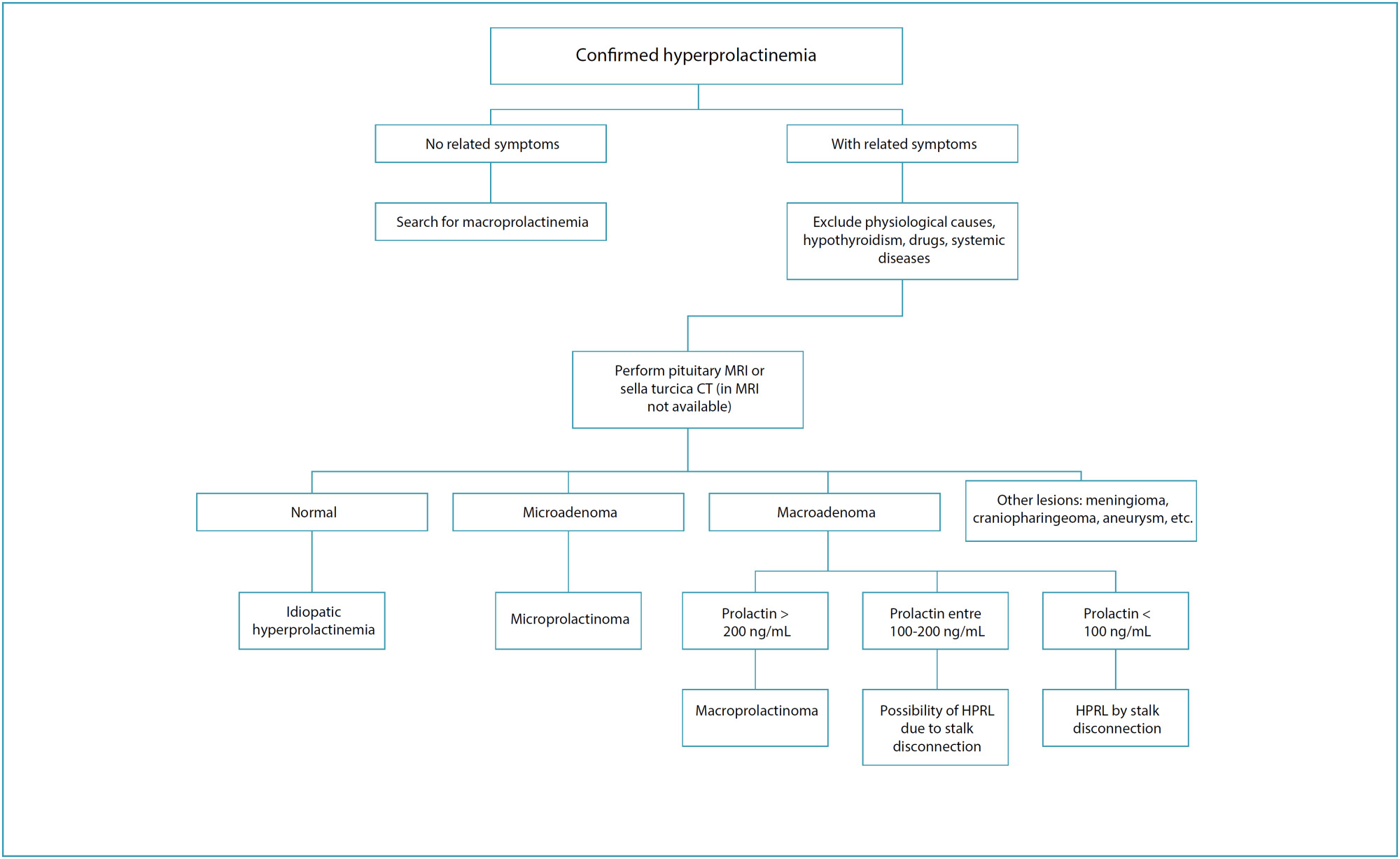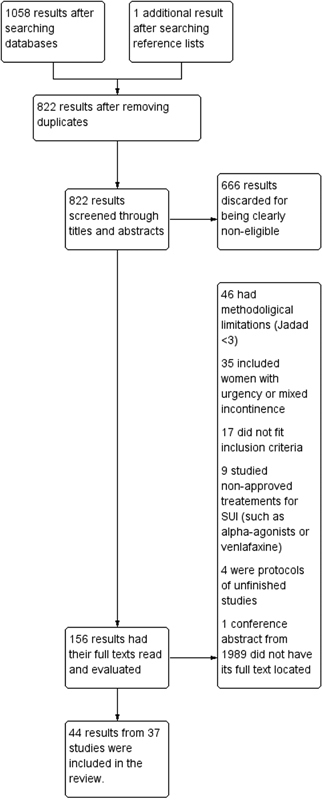-
Original Article04-12-1998
Endogenous sexual steroids and gonadotrophins in women with or without endometrial carcinoma: a comparative clinical study
Revista Brasileira de Ginecologia e Obstetrícia. 1998;20(5):267-271
Abstract
Original ArticleEndogenous sexual steroids and gonadotrophins in women with or without endometrial carcinoma: a comparative clinical study
Revista Brasileira de Ginecologia e Obstetrícia. 1998;20(5):267-271
DOI 10.1590/S0100-72031998000500006
Views115See moreObjective:To analyze the levels of endogenous sexual steroids and gonadotrophin in women with and without endometrial cancer. Methodology:We developed a clinical comparative study on 20 postmenopausal women with endometrial cancer and 20 postmenopausal women without endometrial cancer. The age, the postmenopausal time and the index of body mass were used as matching variables. The plasma levels of the endogenous sexual steroids were measured using radioimmunoassay and immunoenzymatic methods. For the statistic analysis we used the Student’s t test. Results: The levels of androstenedione (A), total testosterone (t) and free testosterone (TL) were higher in the women with endometrial cancer, and those of the luteinic hormone (LH) were significantly lower values in these women. We also observed that the ratio (E1/A) showed significantly lower in the group of women with cancer, while the ratio (E2/E1) did not present any differences between groups. Conclusions: We emphasize the potentiality of sexual steroids and gonadotrophins in the genesis of endometrial adenocarcinoma in postmenopausal women.
-
Original Article04-12-1998
Is the prognosis of the second twin worse ?
Revista Brasileira de Ginecologia e Obstetrícia. 1998;20(5):261-264
Abstract
Original ArticleIs the prognosis of the second twin worse ?
Revista Brasileira de Ginecologia e Obstetrícia. 1998;20(5):261-264
DOI 10.1590/S0100-72031998000500005
Views122See moreThe disadvantages of the second twin in respect of his birth conditions are of great concern. In this study we have reviewed 90 twin births occurred at the Maternidade da Encruzilhada (CISAM) in Recife, from January/92 to December/93, in order to compare perinatal variables between the first and second twin. Fetal presentation, way of delivery, birth weight, Apgar of the 1st and 5th minutes, occurrence of perinatal complications such as hyaline membrane syndrome, transitory tachypnea, and neonatal infection and, finally, the prognosis of each of the twins were evaluated. There was no statistical difference between the incidence of non-vertex presentation, cesarean section, low birth weight, Apgar < 7 in the 1st and 5th minutes and neonatal complication cited above. There was also no difference in perinatal mortality between the first and the second twin. Our results suggest a similar birth condition for both twins of a same pregnancy, therefore, the same perinatal care must be provided for each one.
-
Original Article04-12-1998
Accuracy of Clements’ test for evaluation of fetal lung maturation in preeclamptic patients
Revista Brasileira de Ginecologia e Obstetrícia. 1998;20(5):253-260
Abstract
Original ArticleAccuracy of Clements’ test for evaluation of fetal lung maturation in preeclamptic patients
Revista Brasileira de Ginecologia e Obstetrícia. 1998;20(5):253-260
DOI 10.1590/S0100-72031998000500004
Views131See moreObjectives: To determine sensitivity, specificity, positive and negative predictive values of the shake test (Clements) for evaluation of fetal lung maturation in preeclamptic patients. Methods: A prospective study for validation of a diagnostic method was conducted enrolling 163 preeclamptic patients (gestational age between 28-34 weeks) admitted at CAM-IMIP with indication for fetal maturity testing. Preeclampsia diagnosis and classification followed criteria of the National High Blood Pressure Working Group, 1990. Clements’ test was performed in three tubes and positive, negative or intermediate results were considered for analysis (related to presence or absence of fetal lung maturity). Accuracy parameters were calculated considering actual incidence of hyaline membrane disease (positive maturity = absent disease) after birth. Hyaline membrane disease was defined by criteria of CLAP, 1978. Statistical analysis was performed using c² test (Epi-Info 6.04b) with a 5% significance level. Results: Intermediate results were considered alternately as positive or negative for analysis. When considered positive, sensitivity was 87.9% and specificity 74.5% with positive and negative predictive values of 8.9.4% and 71.4% respectively – efficiency was 84%. When intermediate results were evaluated as negative, sensitivity decreased to 62% and specificity raised to 89.4% and positive and negative predictive values were 93.5% and 51.2% respectively (efficiency = 70%). False-positive results were rare and usually related to neonatal hypoxia: only 5 (6.5%) of 77 neonates with previous positive Clements had hyaline membrane disease. Nevertheless, false negatives were frequent: almost 40% for negative/intermediate results. Conclusions: Despite its limitations, Clements’ test remains a good method for investigation of fetal lung maturation in preeclamptic patients since false positive results are unusual. However sensitivity is low and results have be cautiously analyzed because of elevated rate of false negative results. A good policy is to complement fetal maturity investigation with other tests if a negative result is determined, specially in severe cases when confirmed maturity represents indication for interruption of pregnancy.
-
Original Article04-12-1998
Chronic effects of acetylsacylic acid on pregnant rats
Revista Brasileira de Ginecologia e Obstetrícia. 1998;20(5):245-249
Abstract
Original ArticleChronic effects of acetylsacylic acid on pregnant rats
Revista Brasileira de Ginecologia e Obstetrícia. 1998;20(5):245-249
DOI 10.1590/S0100-72031998000500003
Views79See moreThe purpose of the present study was to evaluate the effects of acetylsalicylic acid (ASA) on the pregnancy of female albino rats. We used 60 pregnant female rats which were divided into six groups of ten cache. All the animals received daily by gavage, from the 5th (day zero) until the 20th day of pregnancy, 1 ml of the following: Group I – only distilled water (control); Group II – 0.2% aqueous solution of carboxymethylcellulose (vehicle); Groups III, IV, V and VI – 1, 10, 100 and 400 mg/kg body weight respectively, of ASA diluted in 0.2% carboxymethylcellulose solution. The animals were weighed on days 0, 7, 14 and 20 of pregnancy. Our results showed that the animals treated with 100 mg of ASA presented a reduction in the number of live newborns. The animals treated with 400 mg/kg/day presented not only a reduction in the number of live newborns but also decrease in maternal, newborn and placental weight.
-
Original Article04-12-1998
Glycosylated hemoglobin levels and cardiac abnormalities in fetuses of diabetic mothers
Revista Brasileira de Ginecologia e Obstetrícia. 1998;20(5):237-243
Abstract
Original ArticleGlycosylated hemoglobin levels and cardiac abnormalities in fetuses of diabetic mothers
Revista Brasileira de Ginecologia e Obstetrícia. 1998;20(5):237-243
DOI 10.1590/S0100-72031998000500002
Views89We analyze prospectively the existence of a relationship between the mother’s glycemic control, in the first half of pregnancy, and the occurrence of abnormal fetal cardiac abnormalities, in pregnant women with diabetes mellitus. In 127 pregnant women, the level of glycosylated hemoglobin was determined on the first visit during prenatal care. Nine patients had type I diabetes, 77 type II and 41 gestational diabetes mellitus (GDM). All mothers were submitted to detailed fetal echocardiography, during the 28th ± 4.127 week of gestation. In 31 (24.4%) of the 127 fetuses cardiac anomalies were detected. In 10 (7.87%) an isolated cardiac anomaly was identified. Mean HbA1c in the group of pregnant women without cardiac anomalies (5.64%) was statistically different from the group with anomalies (10.14%) (p<0.0001). The receiver-operator characteristic, representing the balance between sensitivity (92.83%) and specificity (98.92%) in the diagnosis of structural cardiac abnormalities, showed a cut-off point at the 7.5% HbA1c level. In nine of ten fetuses with structural cardiac anomalies, the maternal level of HbA1c was higher than 7.5%. The difference between means of the groups with and without myocardial hypertrophy diagnosed as isolated anomaly (MCHP) was not statistically significant, when considering both type II diabetes and GDM subgroups. In conclusion, levels of HbA1c higher than 7.5% were associated with most cases of echocardiographycally diagnosed structural cardiac anomalies. On the other hand, this test was not useful to discriminate conceptus with MCHP.
Key-words Diabetes mellitusFetusGlysosylated hemoglobin AMalformationsPregnancy complicationsUltrasonographySee more -
04-12-1998
RBGO: presente e futuro
Revista Brasileira de Ginecologia e Obstetrícia. 1998;20(5):235-235
-
04-12-1998
Estudo longitudinal das alterações hemodinâmicas e estruturas cardíacas em gestantes sem patologia
Revista Brasileira de Ginecologia e Obstetrícia. 1998;20(4):225-225
Abstract
Estudo longitudinal das alterações hemodinâmicas e estruturas cardíacas em gestantes sem patologia
Revista Brasileira de Ginecologia e Obstetrícia. 1998;20(4):225-225
DOI 10.1590/S0100-72031998000400009
Views63Estudo Longitudinal das Alterações Hemodinâmicas e Estruturas Cardíacas em Gestantes sem Patologia[…]See more -
04-12-1998
Ultra-sonometria de calcâneo em mulheres pré e pós-menopáusicas comparação com densitometria óssea
Revista Brasileira de Ginecologia e Obstetrícia. 1998;20(4):225-225
Abstract
Ultra-sonometria de calcâneo em mulheres pré e pós-menopáusicas comparação com densitometria óssea
Revista Brasileira de Ginecologia e Obstetrícia. 1998;20(4):225-225
DOI 10.1590/S0100-72031998000400010
Views90Ultra-Sonometria de Calcâneo em Mulheres Pré e Pós-Menopáusicas Comparação com Densitometria Óssea […]See more
Search
Search in:
Tag Cloud
Pregnancy (252)Breast neoplasms (104)Pregnancy complications (104)Risk factors (103)Menopause (88)Ultrasonography (83)Cesarean section (78)Prenatal care (71)Endometriosis (70)Obesity (61)Infertility (57)Quality of life (55)prenatal diagnosis (51)Women's health (48)Postpartum period (46)Maternal mortality (45)Pregnant women (45)Breast (44)Prevalence (43)Uterine cervical neoplasms (43)







